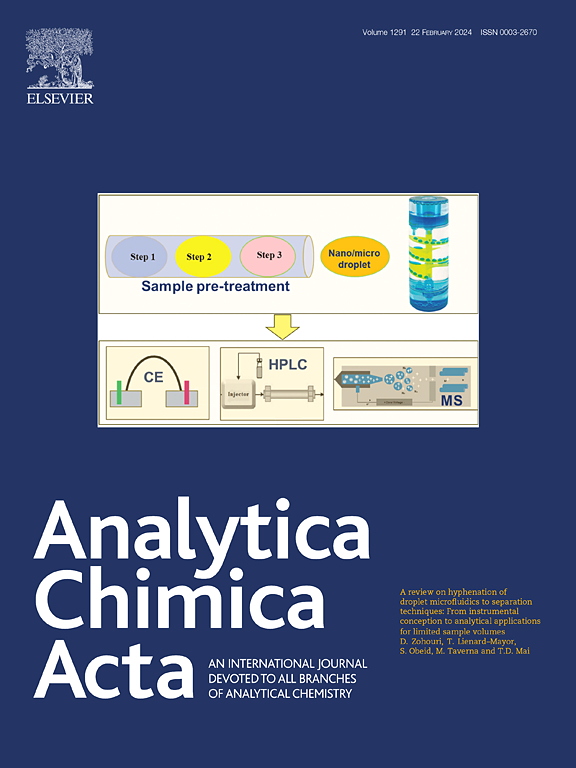Development of a multiplexing method for the quantification of “high-risk” host cell lipases in biotherapeutics by Luminex
IF 5.7
2区 化学
Q1 CHEMISTRY, ANALYTICAL
引用次数: 0
Abstract
Clearance of residual Host Cell Proteins (HCPs) is critical for the manufacturing processes of biotherapeutics. HCPs have the potential to impact product efficacy and quality, posing a risk to patient safety. It is therefore essential to be able to both identify and quantitate HCPs throughout drug development, even if the proteins are present in low concentrations. Traditional Enzyme-Linked Immunosorbent Assays (ELISAs) have historically served as the gold standard for monitoring HCPs; however, ELISA methods are labor-intensive and costly. With an increase of HCPs being identified below detectable quantification levels, there is a need for simultaneous detection of selectively targeted HCPs. Here, we develop a Luminex multiplexing method that is able to accurately quantify two “high-risk” lipases Lipoprotein Lipase (LPL) and Phospholipase B-Like 2 (PLBL2) within the same assay. This study outlines the method development for optimizing parameters such as antibody constructs, conjugation ratios, signal enhancement, and more in order to create the most efficient multiplexing method. As a result, a Luminex multiplexing method can provide a similar result to a monoplexing ELISA method but in a faster and more cost-effective manner. This method can be expanded to include other “high-risk” HCPs and used for future HCP applications.
利用 Luminex 开发用于定量生物治疗药物中 "高风险 "宿主细胞脂肪酶的多重方法
清除残留的宿主细胞蛋白 (HCP) 对生物治疗药物的生产过程至关重要。HCP 有可能影响产品的疗效和质量,给患者安全带来风险。因此,在整个药物开发过程中,即使蛋白质的浓度很低,也必须能够识别和定量 HCP。传统的酶联免疫吸附试验(ELISA)历来是监测 HCPs 的黄金标准,但 ELISA 方法耗费大量人力且成本高昂。随着越来越多的 HCP 被鉴定出低于可检测的定量水平,因此需要同时检测有选择性的目标 HCP。在此,我们开发了一种 Luminex 多路复用方法,它能在同一种检测方法中准确定量两种 "高风险 "脂肪酶--脂蛋白脂肪酶 (LPL) 和类磷脂酶 B 2 (PLBL2)。本研究概述了优化抗体构建、共轭比率、信号增强等参数的方法开发过程,以创建最高效的多重检测方法。因此,Luminex 多路复用法可提供与单路酶联免疫吸附法类似的结果,但速度更快,成本效益更高。这种方法可扩展到其他 "高风险 "HCP,并可用于未来的 HCP 监测应用。
本文章由计算机程序翻译,如有差异,请以英文原文为准。
求助全文
约1分钟内获得全文
求助全文
来源期刊

Analytica Chimica Acta
化学-分析化学
CiteScore
10.40
自引率
6.50%
发文量
1081
审稿时长
38 days
期刊介绍:
Analytica Chimica Acta has an open access mirror journal Analytica Chimica Acta: X, sharing the same aims and scope, editorial team, submission system and rigorous peer review.
Analytica Chimica Acta provides a forum for the rapid publication of original research, and critical, comprehensive reviews dealing with all aspects of fundamental and applied modern analytical chemistry. The journal welcomes the submission of research papers which report studies concerning the development of new and significant analytical methodologies. In determining the suitability of submitted articles for publication, particular scrutiny will be placed on the degree of novelty and impact of the research and the extent to which it adds to the existing body of knowledge in analytical chemistry.
 求助内容:
求助内容: 应助结果提醒方式:
应助结果提醒方式:


